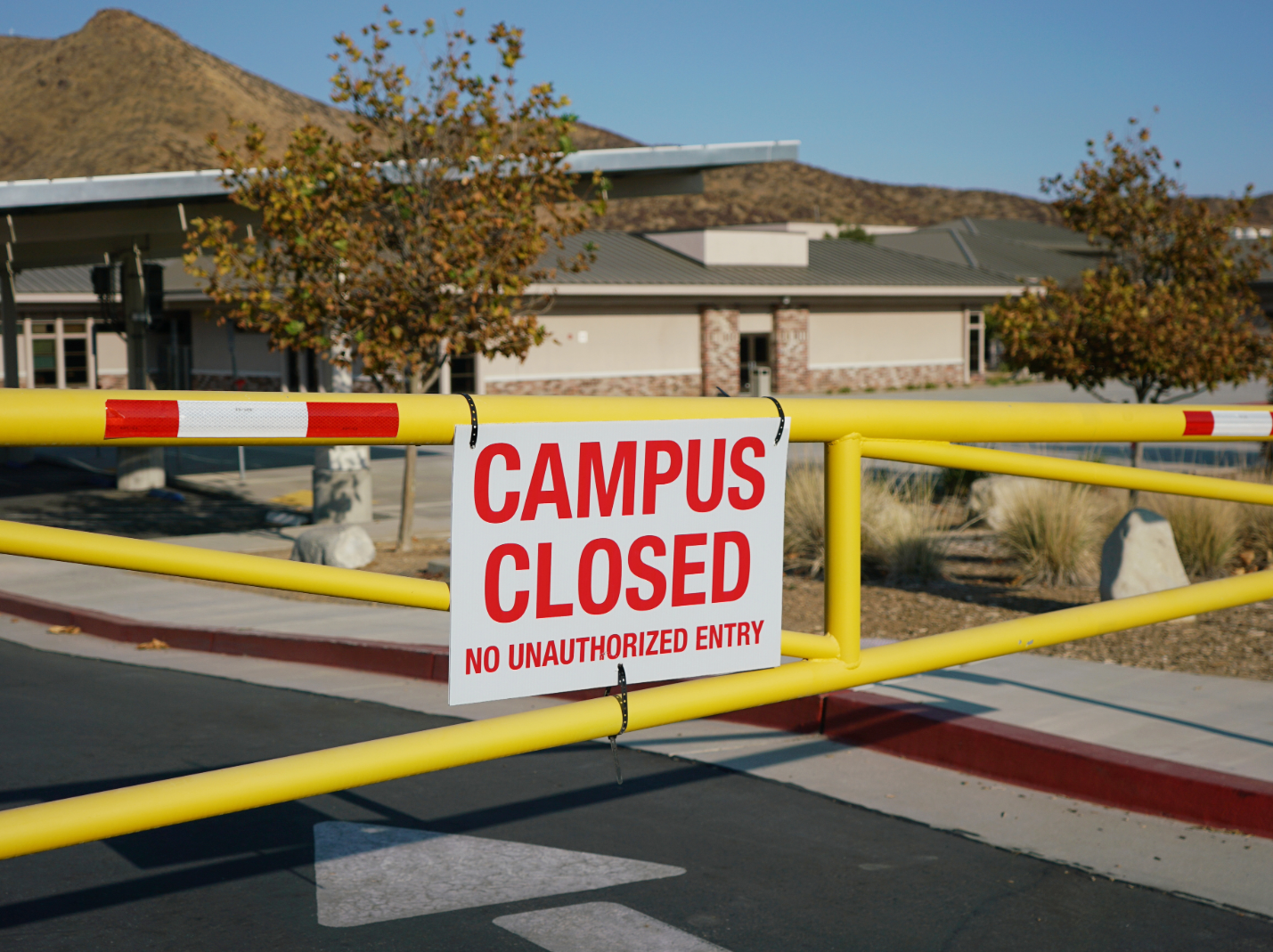
Since March 2020, at least 64 colleges—mostly small, private liberal arts schools—have either closed or announced they will be closing, affecting almost 46,000 students.
This follows a decade that saw nearly 900 colleges shut their doors. Most of those, however, were for-profit institutions, as the Obama Administration cracked down on such schools for allegedly bilking their students, not to mention the federal government, out of financial aid funds.
This latest round of closures feels different. It primarily affects traditional not-for-profit institutions and even includes some public campuses, raising a number of questions: Why is this happening? What might be the long-term consequences? And what can at-risk colleges do to protect themselves?
The “why” has to do mostly with shrinking enrollments. According to the National Student Clearinghouse, from 2012 and 2019, college enrollment nationwide fell by more than 10 percent, due in large part to a four percent drop in the birthrate from 1990 to 2001. This demographic trend will only worsen, as the birthrate declined even more sharply following the Great Recession in 2008.
Another factor affecting enrollment is our irrational response to covid, locking young people—who were at very low risk—out of their classrooms for a year or more. The Chronicle of Higher Education reported that, between March 2020 and August 2022, more than 1.2 million students simply disappeared from college campuses. Some returned, to be sure—but not all, and not enough to prevent dozens of those campuses from closing.
But perhaps the most significant development affecting current enrollment trends is the loss of trust in higher education. A recent Gallup survey found that confidence in America’s colleges and universities has plummeted in the last decade, with only 36 percent of adults expressing “a great deal” or “quite a lot” of confidence in our higher education system, down from 57 percent in 2015.
Combine that with the fact that many companies no longer require a college degree for entry-level positions, and it’s easy to see why so many young people are passing on college—and why so many campuses are hurting as a result.
Unfortunately, these campus closures come at a price—for students, for faculty and staff, for communities, and for society. Thousands of young people lose the opportunity to follow their dreams to become doctors, lawyers, teachers, engineers, nurses, or accountants. Faculty and staff are laid off, and not only do they suffer but so do the communities where they live as businesses close and economic depression sets in.
But the damage goes far beyond economics. About a third of the institutions that have closed in the past few years have been small, Christian colleges. This both deprives students of choices and lessens the influence of Christian education on our society—which, arguably, has never been needed more than it is right now, as the insanity of secularism seems to reach new heights each day.
How can colleges that may be teetering on the brink keep from joining the list of casualties? In a 2019 article for the James G. Martin Center for Academic Renewal, I outlined a five-point survival plan that I believe still applies:
First, campuses at risk of closing must make the hard decision to downsize as necessary, even if that means dropping programs and/or laying off faculty and staff. Any program that isn’t pulling its weight must go. Cruel as that sounds, it’s better for a few folks to lose their jobs than for an entire institution to fail, taking everyone down with it.
Second, colleges must avoid the rampant mission creep currently infecting academia. They must stop trying to be all things to all people. We don’t need community colleges to become four-year schools, nor do we need every regional university to offer doctoral degrees.
Third, colleges must find ways to lower tuition for students—not just by offering “discounts” but by dropping the sticker price. Why would students spend $30,000 a year to go to a small liberal arts college when they can attend the state university down the street for less than half that? (To fund these price cuts, see my first two suggestions.)
Fourth, colleges must ensure that their curriculum leads to viable careers and well-paying jobs. I’m all for education for its own sake—and there are ways to work that into even the most practical curriculum—but most students aren’t interested in paying for a degree that doesn’t help them reach their financial goals.
Fifth, colleges must cease being overtly political. In the Gallup survey cited above, one of the main reasons respondents gave for not trusting higher education institutions is that they are seen as left-wing indoctrination camps. Maybe Ivy League schools can get away with that, but the average small college cannot. Many students will just go elsewhere—or not go at all.
Let me add a sixth point, directed specifically at religious institutions: They must remain true to their values. Surrendering to secularism to attract students will likely backfire and will certainly result in mission failure, if not extinction.
For institutions without large endowments or ranked football teams, the long-term outlook is challenging. With the “enrollment cliff” fast approaching, things are likely to get worse before they get better. Still, colleges that plan ahead, embrace their identity, and make sacrifices now stand a good chance of surviving.
Image by Rix Pix — Adobe Stock — Asset ID#: 386267299

The small liberal arts college in Illinois where I teach is struggling. After the George Floyd incident, the college added a requirement that students take one course that satisfies the new DEI requirement. Meanwhile, next door Iowa just got rid of DEI in all of its schools.
The faculty members where I teach are being asked to come up with ways to increase enrollment. Would announcing and promoting that we will no longer have a DEI requirement be a potential way to attract students?
“About a third of the institutions that have closed in the past few years have been small, Christian colleges/”
How many were truly “Christian” and how many were “Christian” in name only?
How many saw education as a Christian mission and how many saw it as a business?
Sure the books have to be balanced and the bills paid, but there is a big difference between seeing students as a fungible resource to be exploited and as unique souls to be saved. And hence I ask: How many were truly Christian in nature? And did they articulate and defend that difference?
There are a few other unpleasant truths to be addressed, starting with the estimate that half of the colleges that existed in 2020 won’t be here in 2030. It’s not just that the babies born during the Great Recession won’t be going to college, but that their grandparents were the Children of the Depression, a small generation which led to Gen X also being a smaller generation. We have had alternating large and small generations all the way back to the US Civil War, and what saved Higher Ed in the early ’90s were the middle-aged women returning to finish their degrees now that their children were grown.
The other thing to realize is that China has now rebuilt the universities it destroyed during the Cultural Revolution, and India has built the universities it never had before — these are the two largest demographics of International students who no longer need to come here, much as our students no longer needed to go to Europe after WWII.
The days of a line of prospective students begging entry, with checkbooks in hand, are over and that means that faculty productivity must increase so as to decrease expenses.
Excepting those cases where outside entities are willing to pay for it, on a cost-plus basis, the concept of “publish or perish” needs to itself perish. We are producing volumes of expensive gobblygook that no one ever reads, and is so convoluted that it takes a computer to realize that it is plagiarized. Harvard’s up to what, an 8th case this year alone? Over half of peer-referred psych work can’t be duplicated? Why are we paying for this garbage?
Parents and students are paying for TEACHING and we need to go back to requiring that all professors teach at least six classes a semester, and that at least two each semester not be different sections of the same class. Yes, we need to address administrative salaries, but the real budget-buster is faculty salaries. $100,000.00 salaries may be necessary in the big coastal cities, but the costs of living in small town America are much less and there is no excuse to be paying faculty anywhere near that much.
Reality is that the institution can’t afford it — reality is that the student revenue base won’t support it. It’s the same thing that happened to the American Merchant Marine, faculty run the risk of pricing themselves out of the industry.
And reality is that professors used to teach eight courses a year, so asking them to merely teach six isn’t that unreasonable.
And as to the college towns which will be decimated (or worse) if the college closes, they need to be reminded of this. They need to be reminded that the occasional loud spring party is the “sound of money” — much as the smell of manure spread on fields in the spring is the “smell of money.”
Over the past 45 years or so, college towns have come to see students as an inexhaustible fungible resource to be exploited for the benefit of the town. They need to realize that if they kill the goose that is laying the golden eggs, there won’t be any golden eggs anymore — that a college town that is expensive and inhospitable to college students (in an increasingly competitive market) will lose to others who aren’t.
And colleges need to support values that the PARENTS hold.
I suspect a lot of them were Christian in name only. Seems like many (most?) have an LBGT+ student club that is receiving funds.